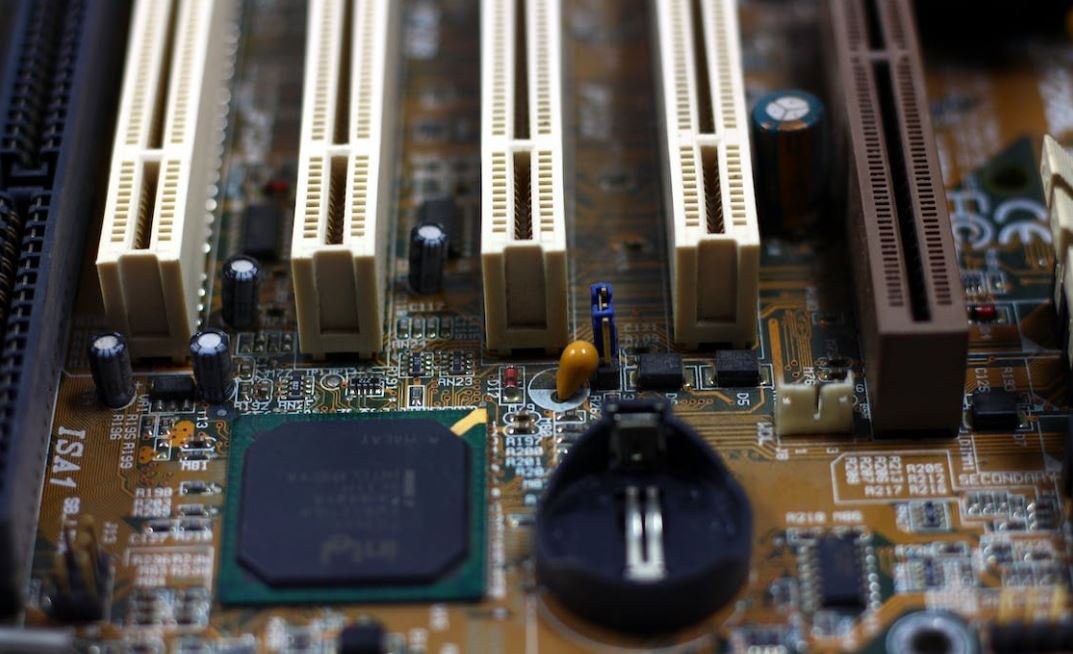AI Security Issues
Artificial Intelligence (AI) has revolutionized numerous industries, enhancing automation, decision-making, and problem-solving capabilities. However, as AI continues to evolve, so do the security challenges associated with it. This article explores some of the key security issues AI faces and underscores the need for robust security measures to mitigate potential risks.
Key Takeaways
- AI presents unique security challenges due to its ability to process and analyze vast amounts of data in real-time.
- Adversarial attacks are a major concern as AI systems can be manipulated to deliver incorrect results or make wrong predictions.
- Data privacy and confidentiality must be a top priority to prevent unauthorized access or misuse of sensitive information.
- As AI systems become more autonomous, the risk of decision-making biases and discrimination grows.
- Efficient security measures, such as robust encryption and intrusion detection systems, are essential to protect AI infrastructure.
- Collaboration between AI developers, cybersecurity experts, and regulatory bodies is crucial to address emerging security challenges.
AI Security Challenges
**AI adoption brings specific security concerns** compared to traditional software systems. *The ability of AI systems to analyze massive data sets and make autonomous decisions creates new attack vectors and vulnerabilities*. Adversarial attacks, data privacy risks, biases, and infrastructure protection are among the key challenges being faced.
Adversarial Attacks
**Adversarial attacks** represent a significant threat to AI systems. *Attackers can manipulate input data or introduce specific patterns, causing AI algorithms to produce incorrect results*. These attacks can have severe consequences in critical areas like finance, autonomous vehicles, or cybersecurity. It is crucial to develop robust defense mechanisms and continuously monitor the system for potential attacks.
Table 1 represents some notable adversarial attack techniques:
| Attack Technique | Description |
|---|---|
| Fast Gradient Sign Method (FGSM) | Manipulates input data by modifying it based on the gradients of the loss function to generate adversarial examples. |
| Deepfool | Iteratively constructs adversarial perturbations by linearizing the decision boundary of the AI model. |
| Transferability | Exploits the vulnerability of AI models to generalize adversarial examples across different models or architectures. |
Data Privacy and Confidentiality
**Protecting data privacy** is crucial in AI systems. *Sensitive information processed by AI models can be vulnerable to unauthorized access or misuse*. Organizations need to employ strong encryption techniques, access controls, and data anonymization methods to ensure confidentiality. Compliance with data protection regulations, such as the General Data Protection Regulation (GDPR), is imperative.
Biases and Discrimination
AI systems can inadvertently exhibit biases and discrimination when trained on biased datasets. *The decisions made by AI models may perpetuate social, racial, or gender biases*. To address this, fairness metrics should be integrated into AI development processes, and continuous monitoring and retraining of models should take place to minimize inherent biases.
Table 2: Key Metrics for Evaluating Fairness
| Metric | Description |
|---|---|
| Statistical Parity | Evaluates whether decision outcomes are equally distributed among different groups. |
| Equalized Odds | Measures if the predictions are independent of the sensitive attributes, ensuring equal false positive and false negative rates. |
| Treatment Equality | Assesses if the treatment received by various groups is similar, avoiding disparate impact. |
Protecting AI Infrastructure
Securing the underlying infrastructure of AI systems is vital. *Robust intrusion detection systems and network security measures should be implemented to safeguard against unauthorized access or data breaches*. Regular vulnerability assessments and system updates must be conducted to identify and address potential vulnerabilities in the AI architecture.
Table 3: Common Security Measures for AI Infrastructure
| Security Measure | Description |
|---|---|
| Network Segmentation | Divides the network into smaller segments to limit lateral movement and contain potential compromises. |
| Intrusion Detection System (IDS) | Monitors network traffic and detects suspicious activities or behavior that may indicate an ongoing attack. |
| Encryption | Protects data at rest and in transit by converting it into an unreadable format that can only be decrypted with authorized access. |
In conclusion, as AI technology evolves rapidly, so do the security challenges associated with it. Adversarial attacks, data privacy concerns, biases, and infrastructure protection are key areas that need to be addressed to ensure the safe and responsible use of AI. Collaboration between AI developers, cybersecurity experts, and policymakers is critical in mitigating these risks and developing robust security measures that keep pace with advancements in AI.

Common Misconceptions
Misconception 1: AI is entirely secure and cannot be hacked
One common misconception is that AI systems are infallible and impervious to cyber attacks. However, this is far from the truth. While AI can enhance security measures, it is not foolproof and can still be vulnerable to hacking.
- AI can be manipulated through adversarial attacks.
- AI systems that are poorly designed or not regularly updated can be more susceptible to breaches.
- Hackers can exploit vulnerabilities in AI algorithms to gain unauthorized access to systems.
Misconception 2: AI poses no privacy risks
Another misconception is that AI systems do not pose any privacy risks to individuals. Although AI technologies aim to improve data protection, they can also inadvertently compromise privacy if not properly implemented and managed.
- AI systems may collect and analyze personal data without explicit consent or knowledge.
- There is a risk of unauthorized access to personal information stored in AI models or databases.
- Machine learning algorithms used in AI systems can potentially expose sensitive information through unintentional bias or inference.
Misconception 3: AI will replace human security professionals
Many people believe that as AI technology advances, it will replace human security professionals entirely. While AI can automate certain tasks and provide assistance, it cannot entirely replace the critical thinking and decision-making skills of human experts.
- AI can augment human capabilities and help security professionals streamline their work.
- Human intuition and experience are still necessary to assess complex security threats that AI may struggle to understand.
- AI systems can make mistakes or have false positives/negatives, requiring human oversight and intervention.

Introduction:
Artificial Intelligence (AI) has emerged as a transformative technology, revolutionizing various industries. However, as AI continues to advance, concerns regarding security issues become more prevalent. This article highlights 10 important aspects of AI security that shed light on the potential risks and challenges associated with this technology.
Table: Machine Learning Algorithm Vulnerabilities
Machine learning algorithms are susceptible to various vulnerabilities that can be exploited by malicious actors. Common vulnerabilities include adversarial attacks, data poisoning, and model inversion attacks.
Table: Privacy Risks in AI Applications
AI applications often involve the collection and analysis of vast amounts of personal data. This table explores the privacy risks associated with AI, such as unauthorized access, data breaches, and the potential misuse of personal information.
Table: Bias and Discrimination in AI Systems
AI systems can exhibit biases and discrimination due to biased data or flawed algorithms. This table examines instances where AI systems have perpetuated biases, potentially leading to unfair treatment and negative societal implications.
Table: Cybersecurity Threats to AI Systems
As AI systems become more interconnected, they also become targets for cyberattacks. This table outlines cybersecurity threats that AI systems face, including data breaches, hacking, and malicious manipulation of AI models.
Table: Ethical Considerations in AI Development
Developing AI technologies raises numerous ethical questions. This table presents ethical considerations in the field of AI, such as transparency, accountability, and the impact of AI on human dignity and social norms.
Table: AI-enabled Surveillance and Privacy Concerns
The use of AI in surveillance poses significant privacy concerns. This table explores the potential impacts of AI-enabled surveillance systems on privacy rights, surveillance creep, and the balance between security and individual liberties.
Table: Regulations and Governance in AI Security
As the importance of AI security becomes apparent, governments and organizations are establishing frameworks for regulation and governance. This table highlights key regulations and governance practices being implemented to address AI security concerns.
Table: Threats to AI Operational Security
AI systems‘ operational security can be compromised through various methods. This table examines potential threats to AI operational security, including unauthorized access, malicious model updates, and the insider threat.
Table: Liability and Legal Implications of AI Security Breaches
AI security breaches can result in serious legal and liability issues. This table explores the potential legal implications of AI security breaches, including liability for damages, responsibility allocation, and the challenges of establishing accountability.
Table: AI in Warfare and National Security
The integration of AI in warfare and national security brings both benefits and risks. This table analyzes the role of AI in warfare scenarios, autonomous weapons, and the ethical concerns surrounding the use of AI in military applications.
Conclusion:
AI’s exponential growth presents a multitude of security issues that demand careful consideration. From algorithm vulnerabilities to privacy risks, bias, and legal implications, addressing these challenges is crucial for the responsible deployment and utilization of AI. By prioritizing AI security and implementing effective regulations, stakeholders can foster the advancement of AI while minimizing associated risks.
Frequently Asked Questions
What are the key security concerns related to AI?
Key security concerns related to AI include data breaches, privacy violations, malicious use of AI, bias and discrimination in AI systems, and the potential for AI to be used in cyberattacks.
How can AI systems be vulnerable to security breaches?
AI systems can be vulnerable to security breaches when they are improperly trained or when they are targeted by malicious actors who manipulate the input data to deceive the AI algorithms, leading to incorrect outputs or unauthorized access.
What are the privacy implications of AI?
AI raises privacy concerns as it often requires access to large amounts of personal data to train the models. There is a risk that the data could be mishandled, leading to privacy violations or unauthorized use of personal information.
What is the potential impact of bias and discrimination in AI systems?
AI systems can inherit biases from the data they are trained on, leading to discriminatory outcomes such as racial or gender bias. These biases can perpetuate existing inequalities and lead to unfair treatment of certain individuals or groups.
Can AI be used maliciously?
Yes, AI can be used maliciously, such as in the development of autonomous cyber weapons or AI-powered phishing attacks. Malicious actors can also exploit vulnerabilities in AI systems to gain unauthorized access or manipulate the outputs for their own gain.
What are the challenges in securing AI systems?
Securing AI systems is challenging due to the complexity of the technology and the need to protect both the models and the data used to train them. AI systems are also vulnerable to adversarial attacks, where attackers purposely manipulate the input data to deceive the system.
What measures can be taken to enhance the security of AI systems?
To enhance the security of AI systems, several measures can be taken, including ensuring robust data protection and privacy policies, regularly testing and auditing AI systems for vulnerabilities, implementing strong access controls, and promoting transparency and accountability in AI development and deployment.
What is explainability in AI security?
Explainability in AI security refers to the capability of AI systems to provide clear and understandable explanations for their decisions and outputs. It enables users to understand how the AI arrived at a particular decision and helps to identify and mitigate any potential biases or vulnerabilities.
How can AI systems be protected from adversarial attacks?
Protecting AI systems from adversarial attacks requires developing robust defense mechanisms, such as adversarial training to make models more resilient to manipulation, monitoring and detecting adversarial inputs, and continuously updating and patching the AI systems to address emerging threats.
What role does collaboration play in addressing AI security issues?
Collaboration plays a crucial role in addressing AI security issues. It requires collaboration between AI developers, security experts, regulatory bodies, and policymakers to share best practices, exchange knowledge, and develop effective laws and frameworks that ensure the safe and secure use of AI technology.




